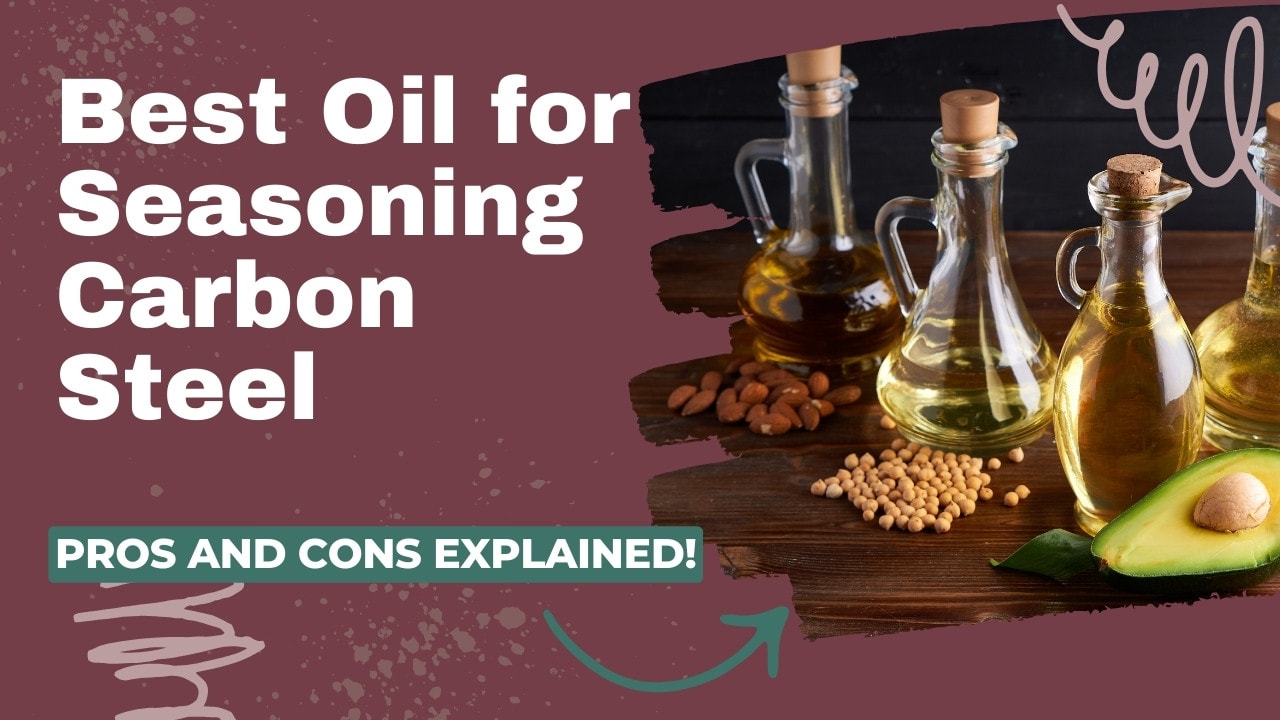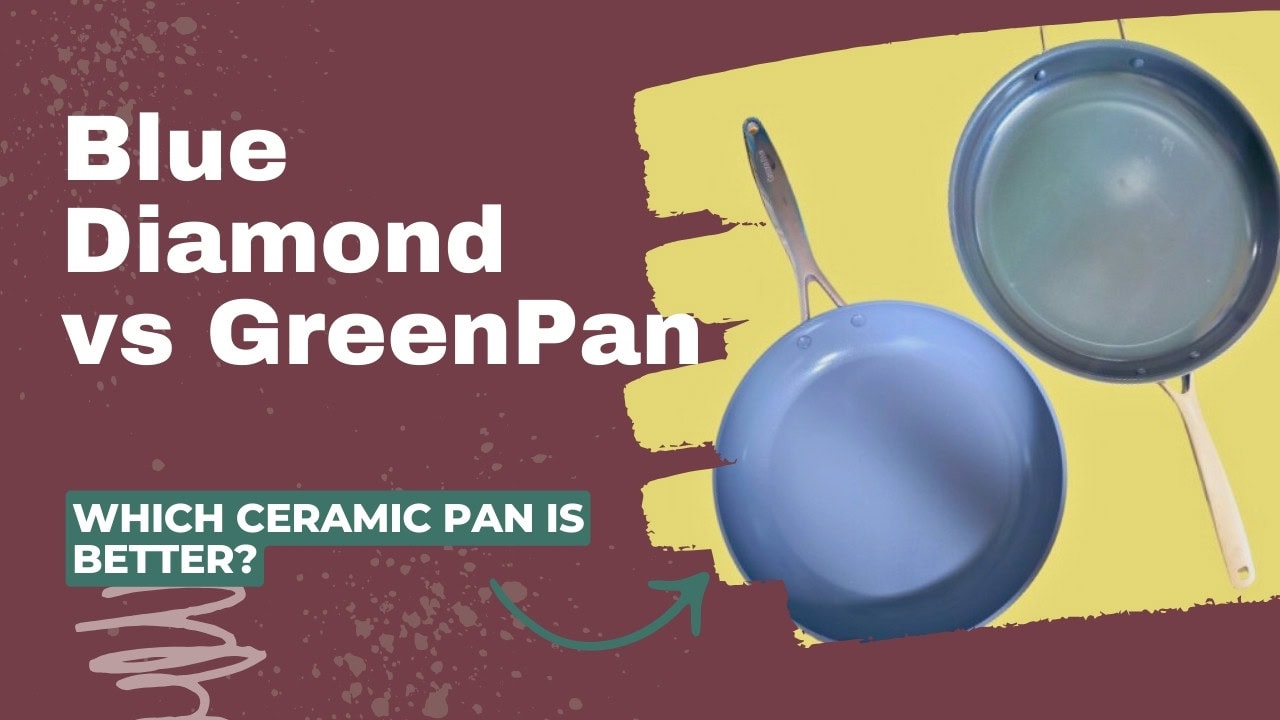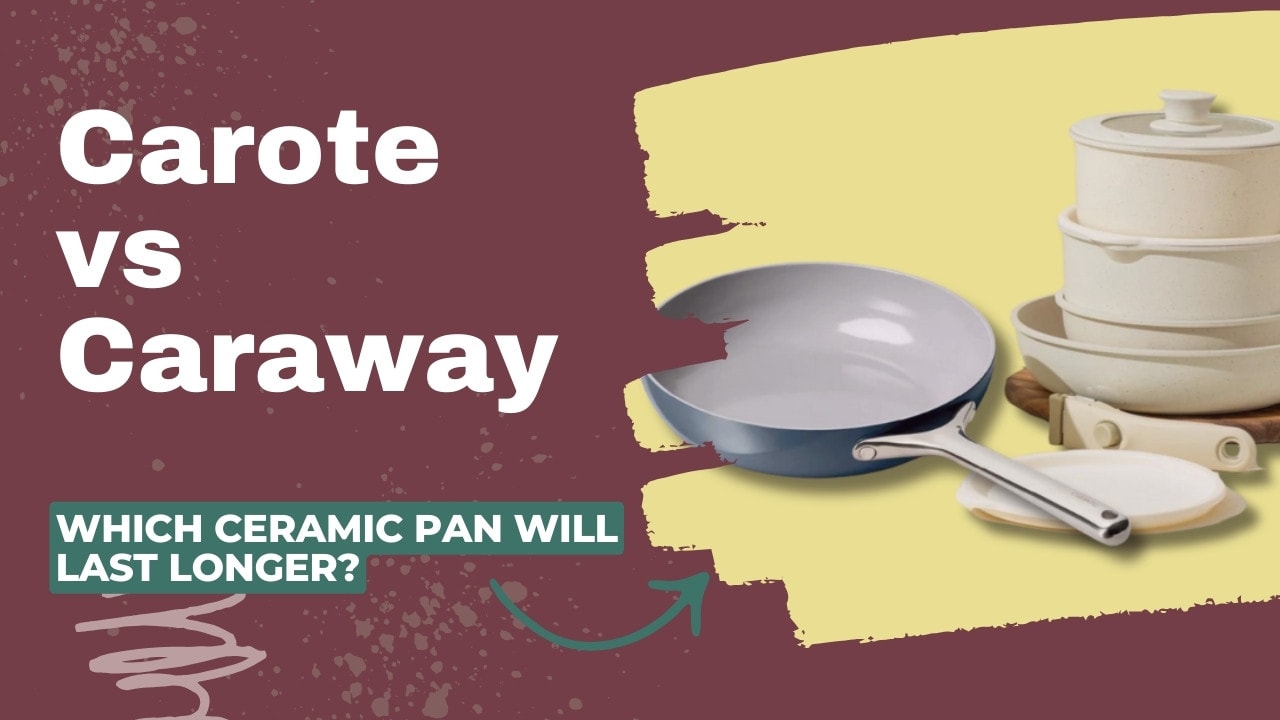Carbon steel is a fast-heating and versatile cookware material that I love working with in my kitchen. But it does require seasoning to maintain its natural nonstick surface. Personally, I don’t mind putting a little TLC into my pans as long as I know I’m doing it right.
There’s a lot of debate among cooks about which oil is best for seasoning carbon steel pans. Several oils have different qualities that they bring to the table – and there are some you should avoid completely.
In this article, I’m going to break down the pros and cons of several different oils and provide some tips for perfectly seasoning your carbon steel pans.
What to Look for in Oil for Seasoning
Seasoning is the process of spreading a small amount of oil across a pan and heating it. The heat causes the oil to polymerize and bond with the metal pan. This layer of polymerized oil prevents food from sticking – naturally. But what kind of oil gives you the smoothest, ultra-nonstick surface?
This question may be more contentious than it first appears! There are multiple oils that can work, but here are the criteria that I, as a professional chef, look for in seasoning oil.
1. High Smoke Point
Looking at the discourse online, you will see that some cooks like oil with a high smoke point, while others prefer a low smoke point because it polymerizes at lower temperatures.
The issue with low-smoke point oils is that they may polymerize too quickly, leaving uneven, sticky layers of seasoning. Low smoke point oils (I’m looking at you, flaxseed oil) result in very hard coatings – but they are also brittle and more likely to flake off. They’re also really hard to remove if they are sticky and uneven and you decide to strip and re-season your pan.
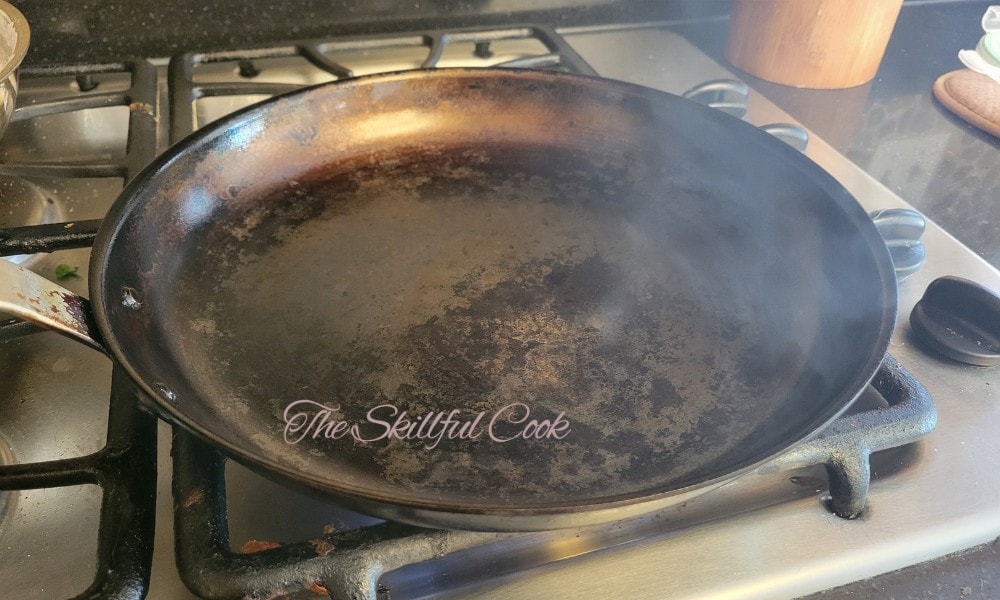
In my eyes, it is worth using a high smoke point oil and waiting a little longer for it to polymerize. Done right, the end result is an even, nonstick layer with no sticky burnt parts.
The best oil for seasoning carbon steel has a high smoke point between 375-500°F. The smoke point of an oil should be marked on the packaging. In general, refined oils have higher smoke points than expeller-pressed or unrefined oils.
2. No Odor or Flavor
It’s very important that your seasoning oil is neutral in odor and flavor. The scent and flavor of an unrefined oil (such as extra virgin olive oil) will linger in the pan and it will affect the taste of the food you prepare in it. The longer you store your pan, the stronger and more musty the seasoning will become, which will be very unpleasant when you eventually use it.
This is why I avoid oils like sesame, coconut, virgin olive, and flaxseed oils.
3. Low Fiber Oil

Now, you might be thinking, what on earth does fiber content have to do with seasoning? Well, it’s actually a crucial factor in determining whether an oil is suitable or not for the job.
Cold-pressed oils, like unrefined olive oil, flaxseed oil, unrefined avocado oil, and coconut oil, among others, have a high fiber content. When used to season, the fiber in the oil will catch and burn, forming that sticky residue that is so common when seasoning incorrectly.
Oils that don’t have fiber will be much thinner than those with it, which makes it ideal for creating a thin layer of seasoning. This is why vegetable and seed oils that are low in fiber are best for seasoning.
Best Oil for Seasoning Carbon Steel
Given those considerations, here are my four favorite oils to use when seasoning carbon steel, along with an explanation as to why I don’t recommend the very popular flaxseed oil.
1. Grapeseed Oil
My personal favorite oil for seasoning carbon steel is grapeseed oil. And I’m not alone in that; many chefs, including Made In Cookware’s Steve Barnett, agree that this oil is superior for this application.
Grapeseed oil has a smoke point of 420°F, it’s affordable, and it’s easy to get hold of. That’s all I’m looking for in a great seasoning oil! You don’t need expensive oils; a simple, cheap oil like grapeseed oil will do the job perfectly.
2. Soybean Oil
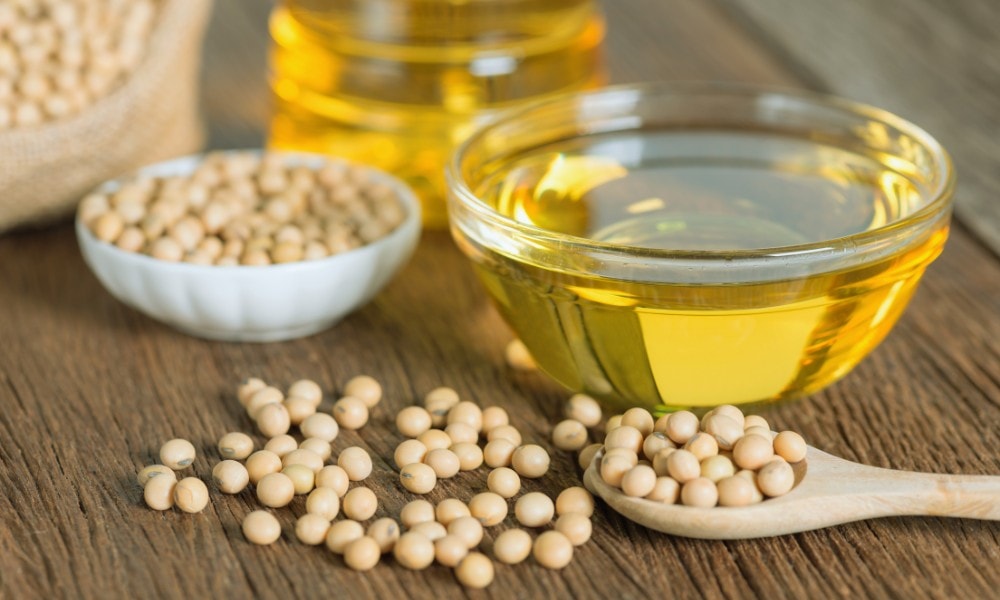
Soybean oil is a great all-purpose product that seasons very well. It has a smoke point of 450°F, which is ideal. One issue is that it’s less easy to find in grocery stores. I wouldn’t go out of your way to find this oil purely for seasoning, but if you already have it on hand, it’s a great option.
3. Sunflower Oil
I don’t know about you, but I always have sunflower oil in my cupboard, so I very often reach for it when I’m seasoning. Sunflower oil is nice and thin with a smoke point of 400°F. It’s completely neutral in flavor, cheap, and available at all grocery stores.
4. Canola Oil
Canola oil is another commonly found oil that is ideal for seasoning. It has a smoke point of 425°F, and it’s thin. Honestly, it’s very similar to sunflower oil, so I enjoy it for the same reasons.

Note: There is a growing contingent of home cooks who consider seed oils to be unhealthy and prefer to cook with unrefined fruit oils like avocado or olive oil. But, even if you don’t like to cook with seed oils, I highly encourage you to use them for seasoning your pan. You’re only using a few drops, and your pan will perform so much better if you use a thin oil like sunflower or canola for seasoning!
Is Flaxseed Oil Good for Seasoning Carbon Steel?
I hinted at it before, but want to go into detail here: No, I don’t recommend flaxseed oil for seasoning carbon steel. Flaxseed oil (the food-safe version of linseed oil) has a strong odor and flavor, it has a low smoke point of 225 °F, and it is high in fiber. So, it is basically the opposite of what I said to look for upfront – plus it’s expensive and hard to find.
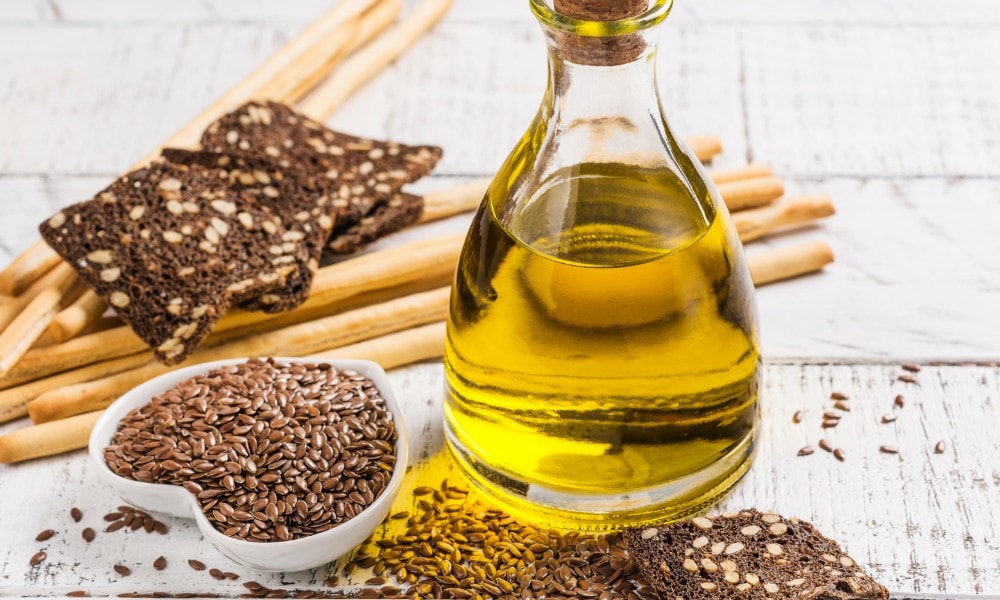
Flaxseed oil is what we call a “drying oil” – which means it contains high levels of alpha-linolenic acid that will polymerize when exposed to air, even without heat. If excessive amounts of flaxseed oil are used during seasoning or if layers are applied too quickly without adequate curing time, the oil may polymerize unevenly, leading to a sticky or gummy residue on the pan’s surface. This can happen if you just wipe your skillet down with flaxseed oil after washing it but don’t heat it – since flaxseed oil polymerizes at room temperature.
Tips for Seasoning Carbon Steel
So now that you’ve chosen your oil, how do you use it?
For a flawless and very charming guide on how to season your carbon steel on the stovetop, I recommend this video from Made In Cookware.
But I have a few tips to help you season like a pro.
Before you start, your pan must be well-cleaned and dried. Scrub out the pan with a sponge using very hot, soapy water until the pan has no oil residue left. Then dry with a dish towel before placing it on the stovetop over medium heat to dry thoroughly. I like to start seasoning when the pan is still warm from the drying.
One of the biggest pitfalls is when people heat oil enough to make it sticky but not enough to polymerize it. It’s essential that you reach the smoke point of your oil to complete the seasoning process. So don’t be shy to leave your pan on until it smokes. The oil that doesn’t polymerize will create a burnt, sticky residue. To get rid of this, you’ll need to scrub your pan out and start seasoning from the beginning.
That said, there shouldn’t be too much smoke. If your pan is smoking heavily, it’s likely that you used too much oil to start with. Seasoning requires a tiny amount of oil to work, so be sparing with it.
Conclusion
As you can see, there are a few solid options when it comes to seasoning oil. Out of all these options, I recommend using grapeseed oil because it has a high smoke point and will leave no flavor behind.
If you have any questions about these oils and the seasoning process, don’t hesitate to ask in the comments.

